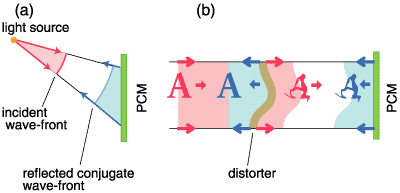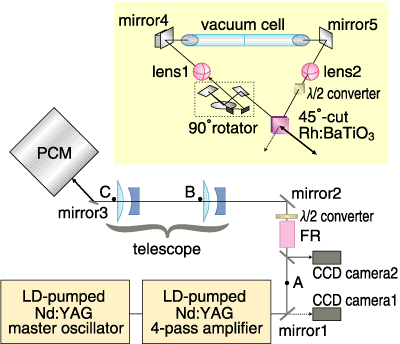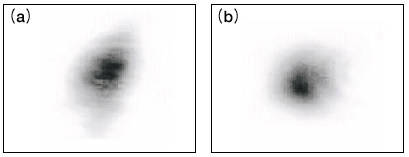| Precise control of laser wave-fronts is crucial in order to maximize the utilization of laser coherence. For example, for the Nd:YAG laser, with an average power of 200 - 300 W, operating an ultra short-pulsed laser which we are developing, the phase (or wave-front) distortion, due to thermal deformation of the optical elements, fluctuation of refractivity and thermal lensing effects, becomes a serious problem, as it makes laser focusing difficult. Distortion may be compensated or corrected using a phase conjugate technique which detects phase distortion and deforms optical elements in real time. Phase conjugate light has the same wave-front as the incident light but propagates in the reverse direction. A wave reflected by a diffraction grating which the incident wave induces in a nonlinear medium becomes the phase conjugate wave to the incident one. A distorted image, made by a distorter located in the light path, can be corrected if light is reflected from the Phase Conjugate Mirror (PCM) and allowed to pass through the distorter from the reverse direction (Fig. 4-1). A PCM has been constructed by employing photo-refractive crystals (Rh:BaTiO3), the system being called "internal loop configuration." We have developed a PCM optical system with an external loop as shown in Fig. 4-2 which responds ten times faster and operates reliably with reflectivity two times larger than the internal loop PCM. Figure 4-3 shows beam profiles of incident light and PC reflected light. Phase distortion due to aberration is almost completely compensated, as is seen in Fig. 4-3 (b). Thus, we have made progress in developing extremely high-power high quality lasers. |


